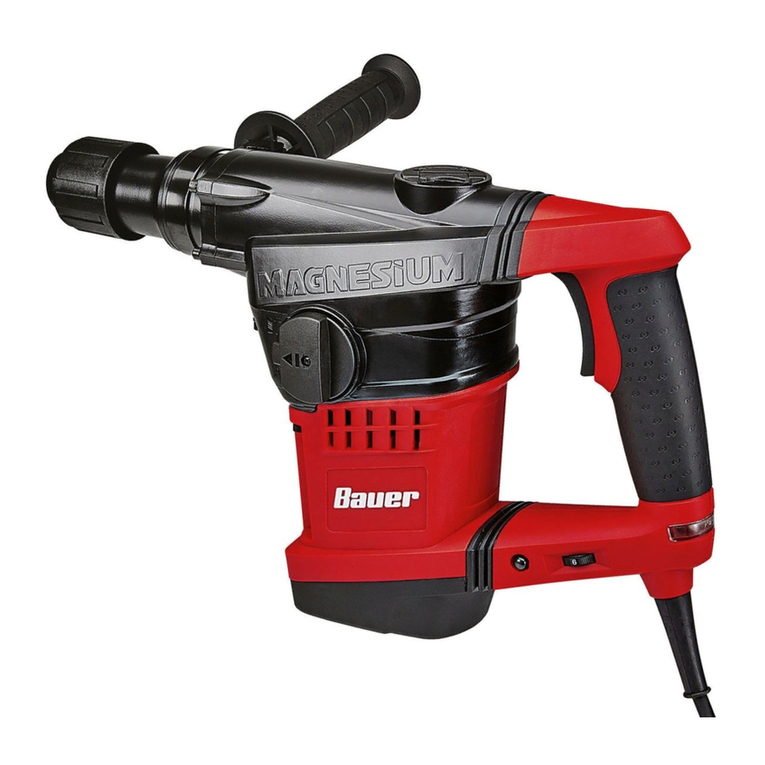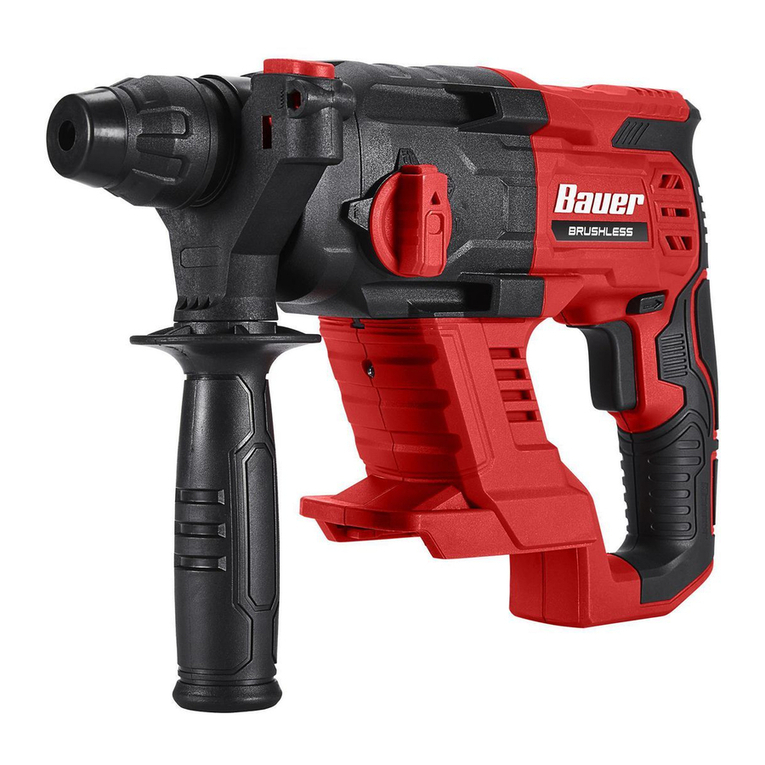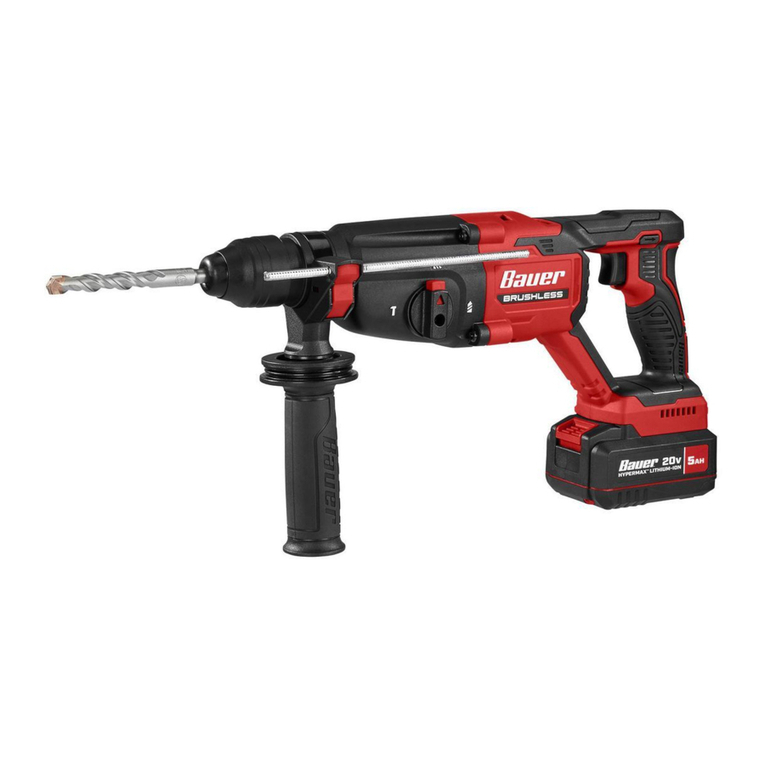
Page 4 For technical questions, please call 1-888-866-5797. Item 58214
SAFETY OPERATION MAINTENANCESETUP
4. Power tool use and care
a. Do not force the power tool. Use the correct
power tool for your application. The correct
power tool will do the job better and safer
at the rate for which it was designed.
b. Do not use the power tool if the switch
does not turn it on and off. Any power
tool that cannot be controlled with the switch
is dangerous and must be repaired.
c. Disconnect the plug from the power
source and/or remove the battery pack,
if detachable, from the power tool before
making any adjustments, changing
accessories, or storing power tools.
Such preventive safety measures reduce the
risk of starting the power tool accidentally.
d. Store idle power tools out of the reach of
children and do not allow persons unfamiliar
with the power tool or these instructions
to operate the power tool. Power tools are
dangerous in the hands of untrained users.
e. Maintain power tools and accessories.
Check for misalignment or binding of moving
parts, breakage of parts and any other
condition that may affect the power tool’s
operation. If damaged, have the power tool
repaired before use. Many accidents are
caused by poorly maintained power tools.
f. Keep cutting tools sharp and clean. Properly
maintained cutting tools with sharp cutting edges
are less likely to bind and are easier to control.
g. Use the power tool, accessories and tool bits
etc. in accordance with these instructions,
taking into account the working conditions
and the work to be performed. Use of the
power tool for operations different from those
intended could result in a hazardous situation.
h. Keep handles and grasping surfaces
dry, clean and free from oil and grease.
Slippery handles and grasping surfaces
do not allow for safe handling and control
of the tool in unexpected situations.
5. Service
a. Have your power tool serviced by a
qualified repair person using only identical
replacement parts. This will ensure that
the safety of the power tool is maintained.
b. Maintain labels and nameplates on the tool.
These carry important safety information.
If unreadable or missing, contact
Harbor Freight Tools for a replacement.
6. Safety instructions for all operations
a. Wear ear protectors when Impact drilling.
Exposure to noise can cause hearing loss.
b. Use the auxiliary handle(s). Loss of
control can cause personal injury.
c. Brace the tool properly before use. This
tool produces a high output torque and without
properly bracing the tool during operation, loss
of control may occur resulting in personal injury.
d. Hold the power tool by insulated gripping
surfaces, when performing an operation
where the cutting accessory or fasteners
may contact hidden wiring or its own cord.
Cutting accessory contacting a “live” wire may
make exposed metal parts of the power tool “live”
and could give the operator an electric shock.
e. Let bit cool before touching, changing
or adjusting it. Bits heat up dramatically
while in use, and can burn you.
f. If the drill bit jams, release the
Trigger immediately; drill torque
can cause injury or break bit.
7. Safety Instructions when using long drill bits
a. Never operate at higher speed than the
maximum speed rating of the drill bit.
At higher speeds, the bit is likely to bend if
allowed to rotate freely without contacting
the workpiece, resulting in personal injury.
b. Always start drilling at low speed and with
the bit tip in contact with the workpiece.
At higher speeds, the bit is likely to bend if
allowed to rotate freely without contacting
the workpiece, resulting in personal injury.
c. Apply pressure only in direct line with the
bit and do not apply excessive pressure.
Bits can bend causing breakage or loss
of control, resulting in personal injury.
8. Silicosis Safety Measures
Masonry drilling on materials such as
concrete (which contains crystalline silica)
can cause silicosis (a serious lung disease),
cancer and death. To reduce crystalline silica
exposures in the workplace and prevent
silicosis and silicosis-related deaths:
a. Conduct air monitoring to measure
worker exposures.
b. Use containment methods to control the hazard
and protect adjacent workers from exposure.
c. Practice good personal hygiene to avoid
unnecessary exposure to silica dust.
d. Wear washable or disposable protective
clothes at the work site. Shower and change
into clean clothes before leaving the work site
to prevent contamination of cars, homes and
other work areas. Avoid skin exposure.
e. Always wear a NIOSH approved respirator and
safety goggles. Ventilate the work area properly.
f. Provide periodic medical examinations for all
workers who may be exposed to crystalline silica.
































